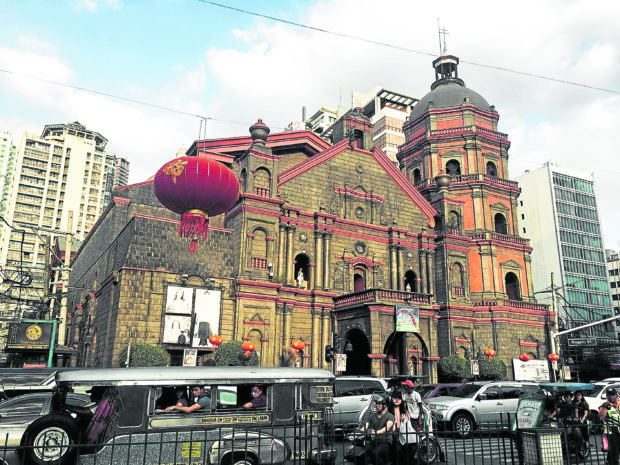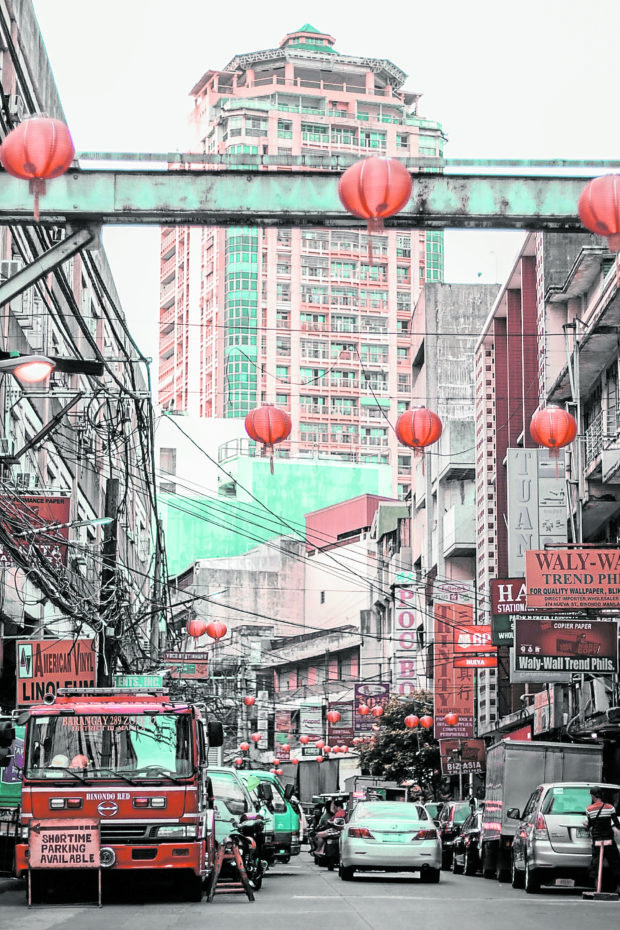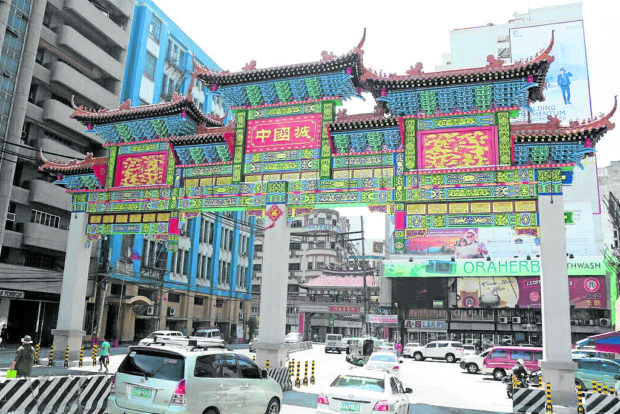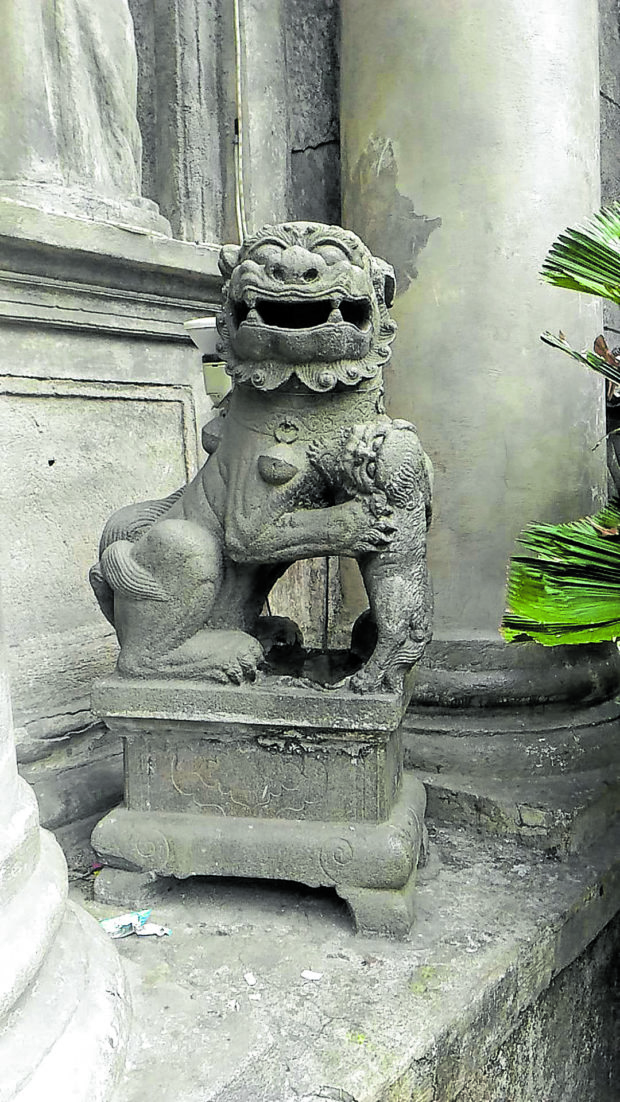Exploring Binondo: A Filipino-Chinese celebration
With a long history of Chinese immigration, the Philippine capital is unsurprisingly home to one of the largest Chinatowns in the world. While the
pandemic may prevent us from marking the upcoming Chinese New Year in the streets of Chinatown, appreciating Binondo’s culture from a distance can be just another way to celebrate.
More than just the Philippines’ Chinatown
While Binondo has always been known as the world’s oldest Chinatown, the 66-hectare district was originally established by Spanish colonial authorities and Dominican missionaries to encourage conversion of early Chinese immigrants to Christian Catholicism. As such, despite the resilient Filipino-Chinese presence in Binondo, Spanish influence was able to leave a mark on its physical landscape.
For instance, Chinatown’s main street, Ongpin Street, remains flanked with cathedrals on both ends. Wandering through the rest of the district also unfolds an interesting juxtaposition of Spanish churches, Buddhist temples, art deco buildings, and modern structures.
Melting pot of culture
Contrary to popular belief, Binondo is a multi-ethnic district populated with other regional groups, such as the Kapampangan. The place then became a melting pot of different cultures, religions, and languages over the centuries, just as any other Chinatown in the world. This led to the emergence of a unique pop culture called “Chinoy,” a term coined from a combination of “Chinese” and “Pinoy.” The term later merged both Chinese and Filipino traditions into a single culture, influencing cuisines, customs, and even architecture.
Unique fusion of Catholicism and Buddhism
Along Tomas Pinpin Street lies a streetside temple where people light at least three incense sticks, provide donations or offerings, pray to the venerated image of Sto. Cristo de Longos, before throwing two crescent-shaped moon blocks in exchange for a yes-or-no answer. This is a manifestation of how Filipino, Spanish, and Chinese influences merged into various interesting cultural practices.
Secretive, industrious, self-seeking
The buildings in the area may look typical from the outside. But the inside unfolds secrets in every courtyard and upper floors. For example, some may host family clan temples, which is a family association hall like the Rotary Club but exclusive for discussing family businesses. These family clan temples also hold great significance in immigrant culture, where new Chinese settlers are guided on how to thrive in their newfound community. Some compounds may even have huge open courtyards surrounded by multiple buildings, a layout like traditional Chinese architecture.

Minor Basilica and National Shrine of Saint Lorenzo Ruiz or Binondo Church along Quintin Paredes Street
Today, second-to-third generation Chinoy families may no longer choose to live in basements or spare rooms attached to their stores. Instead, most are now moving out to several condominium buildings nearby with additional units for storage spaces but still decorated by their festive pasts of bright reds and ube violets.
Symbolic arches, symbols
The physical influences of Chinese culture in the district are evident in the symbolic arches and multilingual signages.
An oriental-inspired arch or gateway signals one’s arrival into a Chinatown. In Binondo, the Chinese Goodwill Arch serves as spatial markers to welcome visitors and all its different cultural spheres. The arch also symbolizes the friendship between Chinese immigrants and the Filipino people. Some of these Chinese-inspired arches are also present in other parts of the Philippines.
Trilingual street signs are distinct qualities of Binondo, often translated in English, Filipino, and traditional Chinese scripts. Some are even decorated with dragons, lucky numbers, Bagua, the laughing Buddha, red lanterns, and lucky animal signs, among others. Compared to other parts of the country, Binondo still keeps the horse-drawn carriages or calesas thriving and alive, with weekends being, by far, the busiest days of the week.
Strolling along Binondo on Chinese New Year
On a regular day before the pandemic happened, people would celebrate the Chinese New Year by visiting colorful yet heavily congested Ongpin Street with its long array of stores, cafés, shops, and restaurants. The strong history of entrepreneurial immigrants made businesses in Binondo adapt to the cultural, dietary, medicinal, and religious needs of the Chinese and the Filipino-Chinese population. Hence, the abundance of shops specializing in exotic Chinese cuisines, festive and religious goods, as well as the latest products from China, Hong Kong, and Taiwan are great finds in the district.
The entire area bursts into action during the Chinese New Year with thousands of people flocking to the streets reveling in various lion and dragon dances to welcome luck and fortune for the upcoming year.
The tour of Binondo usually ends at the boundaries represented by another Chinese arch facing a fountain and the Santa Cruz Church, quiet and solemn, in contrast to the vibrant Filipino and Chinese fusions dating back to the 3rd century.
The author is the principal architect of Fulgar Architects, an architectural firm helping local and international property developers get into unique and diversified planning and design specialties for real estate, hotels, condominiums, commercial and mixed-use township developments with a pursuit for the meta-modern in the next Philippine architecture




